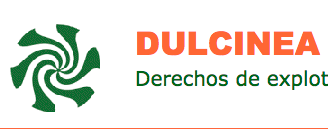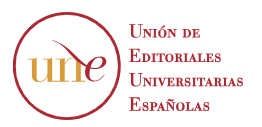Aprendizaje durante un programa de formación en simulación: una replicación conceptual
Resumen
(1) Introducción: La adopción generalizada de la simulación en salud como herramienta docente ha dado lugar a un crecimiento de los programas de formación para instructores de simulación. Sin embargo, son escasos los estudios documentando la eficacia de estos programas. El objetivo fue estudiar la transformación experimentada por los participantes en una edición in situ de un programa de formación específico y comparar las posibles diferencias observadas con una edición online del mismo programa, estudiada y publicada anteriormente. (2) Métodos. El programa consistió en un módulo interactivo online de 15 días, 4 días in situ de 8 horas y una sesión individual online con uno de los instructores. Cada día in situ resultó en reflexiones escritas individuales, que se categorizaron según los temas de aprendizaje descritos por Kolbe y Rudolph (2018). (3) Resultados: Se identificaron 25 subtemas que agrupan un total de 78 elementos identificados en las 38 respuestas de los participantes, categorizadas según cinco temas de aprendizaje: notas para uno mismo, evaluaciones, metacogniciones, anticipaciones de aplicaciones, y emociones. (4) Conclusión: Se identificó una progresión del desarrollo profesional comparable entre el formato presencial in situ (el estudio actual) y online (el estudio publicado anteriormente).
Descargas
Métricas
-
Resumen398
-
pdf375
-
pdf 375
Citas
Cook DA. How much evidence does it take? A cumulative meta-analysis of outcomes of simulation-based education. Med Educ, 2014, 48(8), 750-760. https://doi.org/10.1111/medu.12473
Armijo-Rivera S, Machuca-Contreras F, Raul N, de Oliveira SN, Mendoza IB, Miyasato HS, et al. Characterization of simulation centers and programs in Latin America according to the ASPIRE and SSH quality criteria. Adv Sim, 2021, 6, 41. https://doi.org/10.1186/s41077-021-00188-8
Opazo EI, Rojo E, Maestre JM. Modalidades de formación de instructores en simulación clínica: El papel de una estancia o pasantía. Educ Méd, 2017, 18(1), 22-29. https://doi.org/10.1016/j.edumed.2016.07.008
Issenberg SB, McGaghie WC, Petrusa ER, Lee Gordon D, Scalese RJ. Features and uses of high-fidelity medical simulations that lead to effective learning: A BEME systematic review. Med Teach, 2005, 27, 10-28. https://doi.org/10.1080/01421590500046924
Cook DA, Hamstra SJ, Brydges R, Zendejas B, Szostek JH, Wang AT, et al. Comparative effectiveness of instructional design features in simulation-based education: Systematic review and meta-analysis. Med Teach, 2013, 35, e867-98. https://doi.org/10.3109/0142159X.2012.714886
Leppink J, Losey C, Rojo E, Del Moral I, Maestre JM. ¿Qué te llevas para tu práctica profesional? Temas clave de un programa de formación de instructores en simulación. Sim Clín, 2023, 5(1), 38-46. https://doi.org/10.35366/110988
Kolbe M, Rudolph JW. What’s the headline on your mind right now? How reflection guides simulation-based faculty development in a master class. BMJ STEL, 2018, 0, 1-7. https://doi.org/10.1136/bmjstel-2017-000247
Cook DA, Levinson AJ, Garside S, Dupras DM, Erwin PJ, Montori VM. Internet-based learning in the health professions: a meta-analysis. JAMA, 2008, 300(10), 1181-1196. https://doi.org/10.1001/jama.300.10.1181
Anzelin I, Marín-Gutiérrez A, & Chocontá J. Relación entre la emoción y los procesos de enseñanza aprendizaje. Sophia, 2020, 16(1), 48-64. https://doi.org/10.18634/sophiaj.16v.1i.1007
Torres CET, Rodríguez JC. Los entornos de aprendizaje inmersivo y la enseñanza a ciber-generaciones. Educ Pesq, 2019, 45, e187369. https://doi.org/10.1590/s1678-4634201945187369
Pérez Alcalá MDS. La comunicación y la interacción en contextos virtuales de aprendizaje. Apert, 2009, 1(1), 34-37. Disponible online (visitado el 20 de septiembre de 2023): https://www.redalyc.org/articulo.oa?id=68820815003
Mahmood S. Instructional strategies for online teaching in COVID-19 pandemic. Hum Behav Emerg Technol, 2021, 3(1), 199–203. https://doi.org/10.1002/hbe2.218
Rajab MH, Gazal AM, Alkattan K. Challenges to online medical education during the COVID-19 pandemic. Cureus, 2020, 12, e8966–e8966. https://doi.org/10.7759/cureus.8966
Bennett AA, Campion ED, Keeler KR, Keener SK. Videoconference fatigue? Exploring changes in fatigue after videoconference meetings during COVID-19. J Appl Psychol, 2021, 106(3), 330-344. https://doi.org/10.1037/apl0000906
Shockley KM, Gabriel AS, Robertson D, Rosen CC, Chawla N, Ganster ML, Ezerins ME. The fatiguing effects of camera use in virtual meetings: A within-person field experiment. J Appl Psychol, 2021, 106(8), 1137-1155. https://doi.org/10.1037/apl0000948
Andrade-Lotero LA. Teoría de la carga cognitiva, diseño multimedia y aprendizaje: un estado del arte Magis. Rev Int Invest Educ, 2012, 5(10), 75-92. https://doi.org/10.11144/Javeriana.m5-10.tccd
Hospital virtual Valdecilla. Entrenamiento para instructores en simulación ofrecido por el Institute for Medical Simulation (IMS). Disponible online (visitado el 20 de septiembre de 2023): https://www.hvvaldecilla.es/entrenamiento-de-instructores-cursos-ifms
Instructure Inc. Usted. El poder de la plataforma de gestión del aprendizaje Canvas. Disponible online (visitado el 20 de septiembre de 2023): https://www.instructure.com/es-es/canvas
Guest G, Namey E, Chen M. A simple method to assess and report thematic saturation in qualitative research. PLoS ONE, 2020, 15, e0232076. https://doi.org/10.1371/journal.pone.0232076
Leppink J, Paas F, Van der Vleuten CPM, Van Gog T, Van Merriënboer JJG. Development of an instrument for measuring different types of cognitive load. Behav Res Met, 2013, 45, 1058-72. https://doi.org/10.3758/s13428-013-0334-1
Formstack. Automate work, innovate faster. Disponible online (visitado el 20 de septiembre de 2023): https://www.formstack.com
Roussin CJ, Weinstock P. SimZones: An organizational innovation for simulation programs and centers. Acad Med, 2017, 92, 1114-1120. https://doi.org/10.1097/ACM.0000000000001746
Maestre JM, Rudolph JW. Teorías y estilos de debriefing: El método con buen juicio como herramienta de evaluación formativa en salud. Rev Esp Card, 2015, 68, 282-285. https://doi.org/10.1016/j.recesp.2014.05.018
Rudolph JW, Raemer DB, Simon R. Establishing a safe container for learning in simulation: The role of the presimulation briefing. Simul Healthc, 2014, 9(6), 339-349. https://doi.org/10.1097/SIH.0000000000000047
Angel CJ, Valdes JC, Guzman T. Límites, desafíos y oportunidades para enseñar en los mundos virtuales. Innov Educ, 2017, 17(75), 149-168. http://www.scielo.org.mx/scielo.php?script=sci_arttext&pid=S1665-26732017000300149&lng=es&tlng=es
Pizarro MS. Influencia de la comunicación no verbal en las relaciones interpersonales. Ciencia Lat Rev Cient Multidisc, 2021, 5(4), 3881-3894. https://doi.org/10.37811/cl_rcm.v5i4.591
Rudolph JW, Simon R, Dufresne RL, Raemer DB. There’s no such thing as “nonjudgmental” debriefing: A theory and method for debriefing with good judgment. Sim Health, 2006, 1(1), 49-55. https://doi.org/10.1097/01266021-200600110-00006.
Derechos de autor 2023 Servicio de Publicaciones de la Universidad de Murcia

Esta obra está bajo una licencia internacional Creative Commons Atribución-NoComercial-SinDerivadas 4.0.
Las obras que se publican en esta revista están sujetas a los siguientes términos:
1. El Servicio de Publicaciones de la Universidad de Murcia (la editorial) conserva los derechos patrimoniales (copyright) de las obras publicadas y favorece y permite la reutilización de las mismas bajo la licencia de uso indicada en el punto 2.
© Servicio de Publicaciones, Universidad de Murcia
2. Las obras se publican bajo una licencia Creative Commons Reconocimiento-NoComercial-SinObraDerivada 4.0.
![]()
3. Condiciones de auto-archivo. Se permite y se anima a los autores a difundir electrónicamente las versiones preprint (versión antes de ser evaluada y enviada a la revista) y/o post-print (versión evaluada y aceptada para su publicación) de sus obras antes de su publicación, ya que favorece su circulación y difusión más temprana y con ello un posible aumento en su citación y alcance entre la comunidad académica.




















